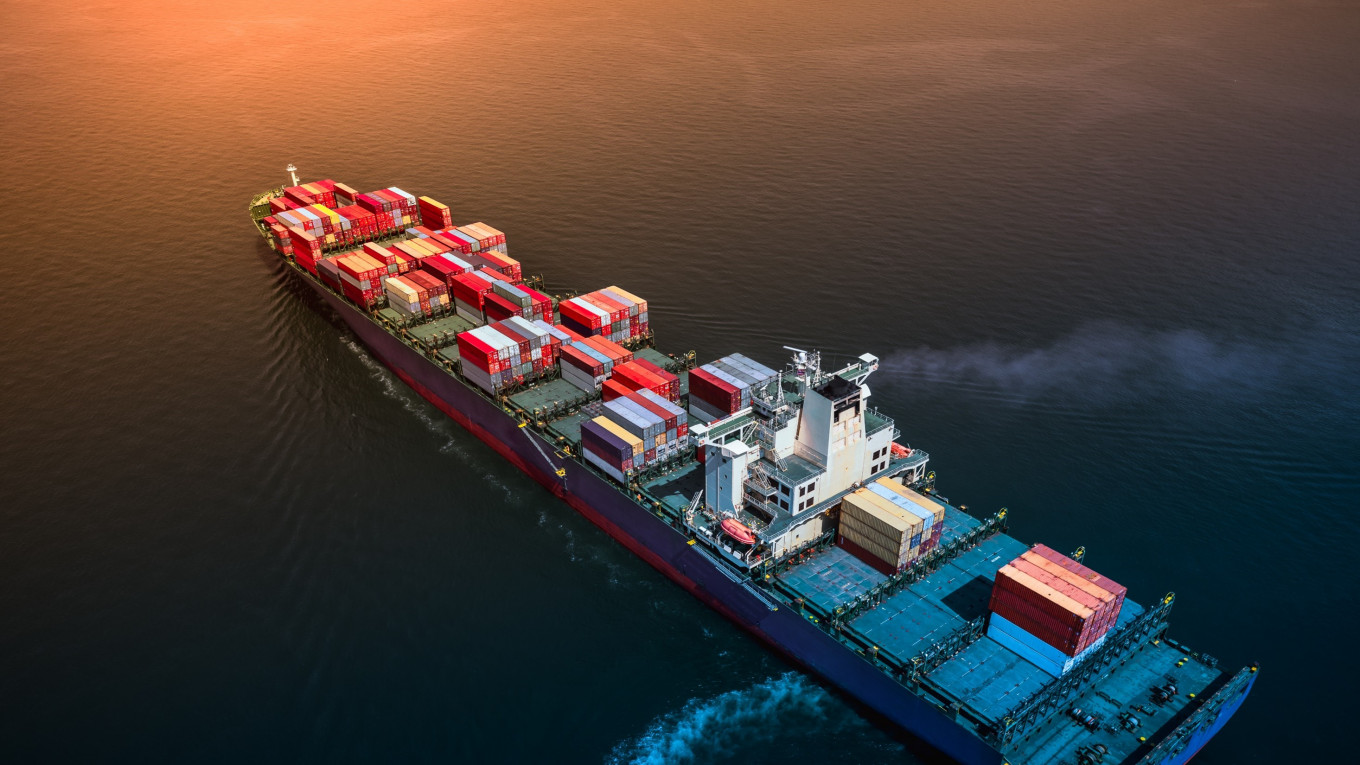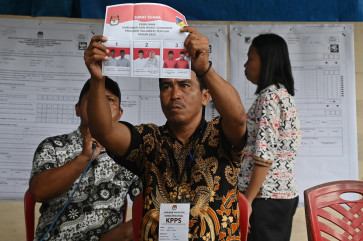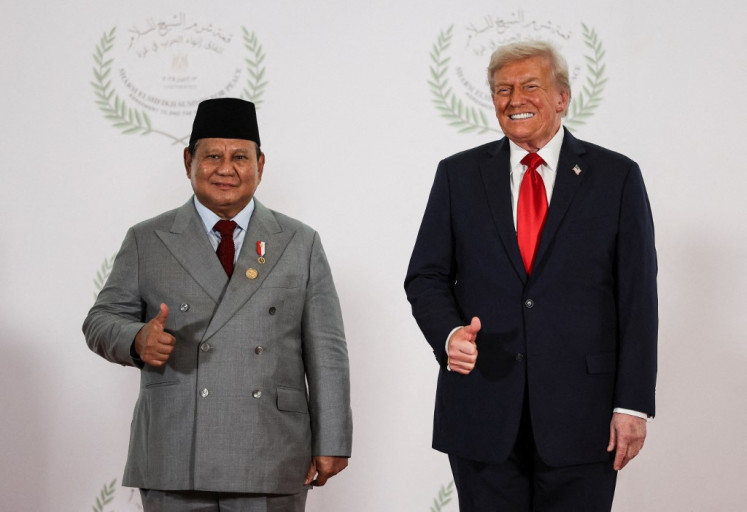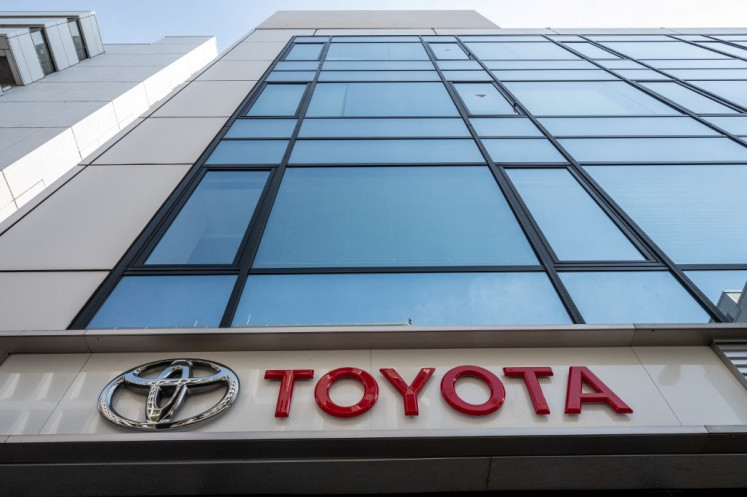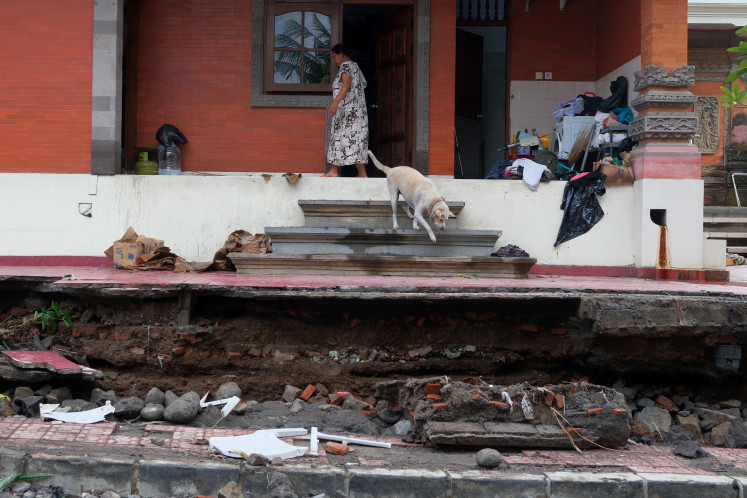Popular Reads
Top Results
Can't find what you're looking for?
View all search resultsPopular Reads
Top Results
Can't find what you're looking for?
View all search resultsHow ASEAN is moving up the value chain
Change text size
Gift Premium Articles
to Anyone
A
SEAN member states are expected to witness robust economic growth and development in the coming years, buoyed by shifting global supply chains and rising affluence.
With Southeast Asia greatly benefiting from the rebalancing of global trade and supply chains, multinationals from Asia and beyond have been relying more on the region as a key production base for a range of sectors, which has accelerated amid ongoing geopolitical uncertainties and global trade.
As a result, the 10 ASEAN member states are set to benefit from macroeconomic tailwinds, including diversified supply chains, a robust growth outlook and manufacturing upgrades driven by advances in technology and the global push toward sustainable development goals.
In addition, IMF data shows that economic growth across Southeast Asia continues to expand steadily, with GDP expected to rise 4.6 percent year-on-year in 2024 compared with a global average of 2.4 percent.
As many of the easy gains have already been realized, Southeast Asia’s manufacturing sector growth will be more challenging yet more rewarding as markets across the region look to move up the value chain.
While a cheap and abundant supply of labor has helped emerging economies attract low-cost and labor-intensive manufacturing, the focus is quickly shifting to higher value-added industry, including sectors such as electronics, semiconductors, machinery, electric vehicles and batteries, and pharmaceuticals.
The early signs are encouraging. Emerging economies across Southeast Asia reported total trade in goods of US$ 3.6 trillion in 2023, up from a pre-COVID high of US$ 2.8 trillion in 2019.
In some countries, the move up the value chain is happening quickly as global trade shifts, with the World Bank noting that Vietnam’s total exports approximated 93.8 percent of its GDP as of 2022, up from 54.2 percent in 2010.
According to a forecast from the Boston Consulting Group, the ASEAN region could generate up to US$600 billion annually in additional manufacturing output, increase annual foreign-direct investment (FDI) in manufacturing by up to US$22 billion and create up to 140,000 new jobs annually.
Ripe for homegrown innovation
The electronics and electrical industry are by far the biggest FDI recipients in ASEAN, helping lift total investment to a record of US$224 billion in 2022.
International businesses such as Samsung and Apple are not only expanding production in Vietnam but are also building R&D hubs in the country.
Malaysia, which recorded the highest GDP growth among ASEAN countries in 2023 at 8.7 percent, has emerged as a major target for business growth in semiconductors. With global giants such as Intel and Infineon having committed to investing billions in the country, the Malaysian government plans to train and upskill 60,000 engineers to position the country as a semiconductor R&D hub.
Thailand, with its already established packaged foods and automobile production sectors, sees its pharmaceuticals industry shifting from primarily producing generics to developing treatments of its own.
Meanwhile, the Philippines is making an aggressive foreign investment push, which could bolster its strengths in business process outsourcing and manufacturing of electronics and technology components.
Not to be outdone, Indonesia is on its way to parlaying its massive nickel reserves, which are key to global EV supply chains, to become a major producer of the EV ecosystem in its own right.
At the same time, sizable investment will also be needed to fuel the energy transition and meet sustainable development goals in ASEAN, which collectively has the world’s fourth-largest energy demand after China, the US and India.
With half of the world’s largest companies having made net-zero commitments and looking to green their value chains, Southeast Asian nations will need to adopt viable pathways to transition their energy systems to continue attracting investment and building their share in global trade.
A coming consumption boom
Beyond the industries, ASEAN’s consumer market is enjoying something of a renaissance, thanks to the region’s increasing prominence in global supply chains that is driving urbanization, boosting wages and widening the pool of domestic savings.
Consumption accounts for around 60 percent of the ASEAN GDP and has been key to the region’s post-pandemic recovery. In Q1 2024, the expansion of private consumption largely offset the tempering of export growth amid a challenging external environment.
By 2030, 70 percent of ASEAN’s population is expected to have attained middle-class income levels, with the consumer market predicted to reach US$4 trillion. In turn, demand will grow for a wide range of products from electronics to automobiles, along with services such as education, health care and leisure.
As Southeast Asian consumers increasingly embrace digitalization, a fast-growing share of consumption will occur within its digital economy, which is led by e-commerce, digital financial services, transportation and food delivery platforms, and online travel and media.
According to Temasek and Google’s e-Conomy SEA 2023 report, the digital economy in the six largest economies of the region – Indonesia, Thailand, Singapore, Vietnam, Malaysia and the Philippines – was worth an estimated US$218 billion in gross merchandise value (GMV) in 2023 and is on track to reach US$600 billion by 2030.
Businesses seeking to pursue growth opportunities in this environment require smart banking solutions and a deep understanding of the region’s local markets.
HSBC’s TradePay, which has been rolled out in selected markets in 2024, is a digital trade finance offering that brings just-in-time financing to ASEAN supply chains with loan processing speeds of under a minute. HSBC’s network currently serves 2.5 million retail clients and 30,000 businesses in the region, while also capturing over 93 percent of ASEAN GDP and international trade.
As the expansion of domestic and international businesses is expected to drive demand for legal, financial and advisory services, businesses wishing to offer these services in ASEAN can leverage the region’s educated workforce, digital literacy and extensive regional connectivity.
A 2023 HSBC survey found that ASEAN’s skilled labor pool ranked as the region’s most compelling feature for international businesses.
Accessing ASEAN’s opportunities
With ASEAN well on track to becoming the fourth-largest economy in the world by 2030, businesses looking to enter or expand in the region need to consider having a thorough strategy for business growth, including market selection and localization, as well as insight into how to leverage the region’s patchwork of trade agreements and investment incentives.
The opportunities emerging in the region are among the most promising, but companies looking to profit from them can face daunting challenges if they embark on this journey unprepared. To this end, having the right banking partner is a good place to find their bearings.
With over 135 years on the ground in ASEAN, HSBC is able to support clients through its extensive network in the region and across the globe, providing support on local market dynamics and supply chains, while also bringing international connectivity.
In addition, it recently launched the US$1 billion ASEAN Growth Fund, which is designed for businesses scaling up rapidly in Indonesia, Singapore, Malaysia, Thailand, the Philippines and Vietnam.
Source: HSBC

